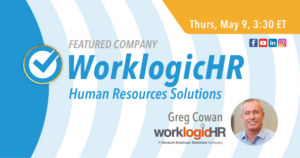5 Reasons to Hold Regular One-on-Ones at Your Dental Practice

How to keep employees on the payroll is a hot-button issue for dental office managers. And, as turnover continues to take its toll on dental practices, managers are on the hunt for new ways to get their employees to stick around. As it turns out, having regular One-on-Ones with your team members… This text opens a new tab to the article on one-on-one meetings… may be the best not-so-secret weapon when it comes to holding onto top employees.
One thing that a lot of managers may not realize is that your employees crave feedback from you… This text opens a new tab to the article on corrective coaching…. Whether it’s positive or redirective (aka, “negative”) feedback, your employees want you to tell them how they are doing in their roles in a constructive way. Not only do they want to know what they can do to make sure they are meeting or exceeding your expectations, but you giving them input on what they are doing right and/or how to improve is crucial to their success at your practice. So, if the challenge is how to best deliver feedback while also avoiding micromanaging, one-on-ones are proving to be your answer.
Giving regular feedback… This text opens a new tab to the article on corrective coaching… is important to keep employees on track. But, even better than that, by scheduling a well-organized, regular time to speak with each member of your team face-to-face, you can dramatically increase employee engagement… This text opens a new tab to the article on one-on-one meetings… at your practice, and employee engagement is the key to employee retention.
“One-on-Ones” – also known as 1:1s or 1-2-1s – aren’t just great for employee engagement. Putting regular face-to-face meetings on the calendar can also help you reduce turnover and make running your business easier.
Still, in a recent survey of more than 500 dental and healthcare professionals across the US, CEDR HR Solutions found that just under 40 percent of practice owners and managers are already taking advantage of this valuable tool for their businesses. Here’s why we think more managers could be holding regular one-on-ones:
Ready to start holding regular One-on-Ones for your practice? Use this free One-on-One Form from CEDR’s HR Experts… This text opens a new tab to the one-on-one form… to document your meetings with employees.
1. One-on-Ones support relationship building, which supports engagement.
Employees crave facetime with their managers, though many don’t feel comfortable asking for it directly. Scheduling regular one-on-one meetings… This text opens a new tab to the article on one-on-one meetings… with your employees and sticking to them sends the signal that your team members are worth your time, and, according to the data, that message can be worth more to an employee than a 20 percent increase in pay.
Plus, people are motivated by different things. One-on-one meetings are a great way to learn what motivates your employees, as well as how they prefer to receive kudos or coaching for their performance.
2. One-on-ones offer a structured way to give (and get) employee feedback.
How many times have you intended to give an employee what felt like an important piece of feedback only to be pulled away by something else? If you’re like most managers, this probably happens to you all the time.
One great thing about one-on-ones is that they provide a regular opportunity to provide the positive and redirective feedback… This text opens a new tab to the article on corrective coaching… that employees need to feel fulfilled in their work and that can help them improve their performance.
Regularly scheduled one-on-ones… This text opens a new tab to the article on one-on-one meetings… are also a great opportunity for you to ask an employee to provide you with potentially valuable information about how your systems and management structure are working, as well as where there might be room for improvement.
3. One-on-ones are a chance to reinforce your company culture and check in on progress.
A one-on-one meeting… This text opens a new tab to the article on one-on-one meetings.. is a great time to check in on an employee’s level of engagement, gauge their connection to and understanding of your company’s core values… This text opens a new tab to the article on core values…, and discuss their progress on specific goals.
If an employee is struggling for any reason, this is your chance to identify the challenges they might be facing inside or outside of the workplace, which could give you an opportunity to provide needed support that you otherwise might have missed.
4. One-on-ones help you stay consistent.
From an HR and compliance perspective, consistency in management is key.
This means treating all employees equally and fairly, implementing your policies the same way for your entire team, and documenting all conversations you have with employees… This text opens a new tab to the article on documentation…. Not only will being consistent help keep your team engaged and productive, but it will also help you build protections for your business should you ever need to let an employee go for performance reasons.
Document your one-on-ones… This text opens a new tab to the one-on-one form… and take notes about what was discussed, including – perhaps especially – conversations related to a need to improve performance or behavior.
5. One-on-ones free up your time and increase team productivity.
Of course, holding regular meetings with each of your employees will require a time commitment.
But, by using this time constructively to address employee challenges and empowering your team members to find solutions to those challenges, you’ll be saving time that would otherwise be lost addressing issues or answering employee questions one at a time.
Plus, the increased engagement you will get by dedicating facetime to your employees will result in a more productive team that requires less oversight to get things done. And that means more time for you and more money for your practice!
Conclusion
Though one-on-ones are a proven way to increase employee engagement, retention, and productivity, less than 40 percent of dental and healthcare professionals use them.
By scheduling regular and well-organized one-on-one meetings with your team members and sticking to them, it sends a message that your employees are important to you, gives you a chance to provide the feedback and facetime your employees crave, and helps you to understand their individual wants, needs, and preferences, which can help you keep them accountable and hold onto them longer.
Of course, one-on-ones will take time to implement and practice to maximize their value to your practice. But leveraging this one simple tool is a great way to increase engagement and reduce turnover at your practice.
If you are already holding regular one-on-ones with your team or are planning to do so, make sure you document all of your conversations with employees (you can use this free form from CEDR to document employee one-on-ones… This text opens a new tab to the one-on-one form…). Or, for more information on one-on-ones and how to implement them for your practice, check out CEDR’s one-on-one blog here… This text opens a new tab to the article on one-on-one meetings….






